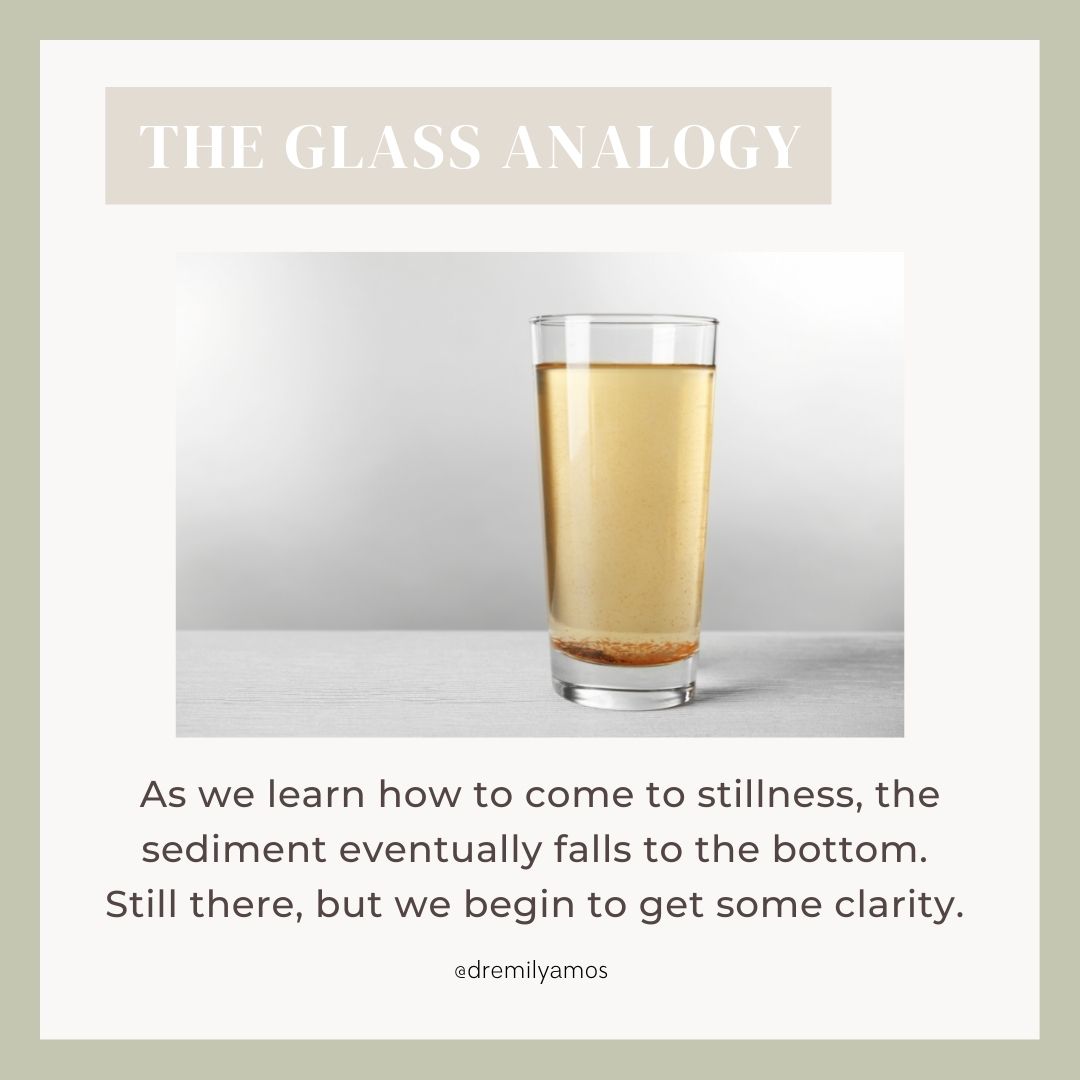The Glass Analogy
Apr 14, 2022
As a mindfulness and meditation teacher, I've encountered a lot of people who struggle to find stillness. The reason for that is variable, but one common one is the preconceived notion that the goal of these practices is to create an empty mind.
I've never had an empty mind.
This roadblock tends to cause issues for novice meditators as they very quickly come to realise that when they begin to introduce quiet moments of reflection & introspection into their day, it feels so incredibly uncomfortable to even sit still. As if when we begin to remove the distraction of doing from our day to day lives, all of a sudden our thoughts and feelings are no longer drowned out by the noise of world.
Well, this is exactly what does happen.
For most of us, we keep busy- take on more projects, say yes to more, grab our phones or devices to scroll, mindlessly eat or engage in other behaviours without awareness. We do this, because the swirling storm of thoughts and feelings within us feels unnerving. So we distract ourselves from it.
It's a bit counter intuitive really.
In this busy, crazy, switched on, hyper-stimulating world... we unconsciously add in more stimulation to drown out the uncomfortable stimulation of our thoughts and feelings.
So much so, that when we do try meditation it feels uncomfortable- in both our bodies and minds. We need to open our eyes, get up and move or shift in our seat. Physical aches and itches appear out of nowhere in our bodies and our minds fill with thoughts of all the things we need to get up and do- anything to get us up and moving again. To start doing again.
When in fact, what we really need is to learn how to do less.
How to be a human being rather than a human doing.
So that's where I come in as a meditation and mindfulness teacher. The gentle guiding voice of compassion that acts as your tour guide through the discomfort of letting go of the doing and emerging into the being.
Let me introduce you to The Glass Analogy.
The Glass Analogy:







You don't need to "meditate perfectly". In fact, that is impossible to even do.
Learning how to be more mindful of your own internal environment means that you will be able to sense when you are operating through that turbid, dirty water.
You'll give yourself some time, space and kindness as you allow those thoughts and feelings that are causing you angst to settle to the bottom. Then you can come back and respond to the demands of your life with clarity rather than confusion.
Over time and with practice, the time it takes to allow the sediment to settle becomes less. You are more emotionally agile and able to respond to increased demands rather than simply reacting to them. Of course the world will still cause your glass of water to become turbid every now and again- it's only natural, that's part of being human- but you possess the key to unlocking clarity once again as you tap back into your mindfulness practice. Reminding yourself to slow down, nurture your body and mind, rest, ground yourself in the now. As you do all those things, the sediment again settles to the bottom and water begins to clear.
Want to learn more about mindfulness and meditation? Then join me in my upcoming Mindful Me training.
Stay connected with news and updates!
Join the mailing list to receive the latest blogs, news and updates.
Don't worry, your information will not be shared.
We hate SPAM. We will never sell your information, for any reason.

